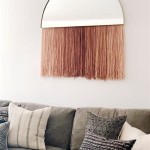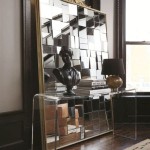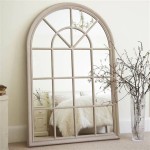What Kind of Cake Can You Mirror Glaze?
Mirror glaze, with its mesmerizing sheen and vibrant colors, has become a popular technique for elevating cakes to works of art. This glossy coating creates a smooth, reflective surface that adds a touch of elegance and sophistication. However, achieving a flawless mirror glaze requires more than just the glaze itself; the cake underneath plays a crucial role in the final result. Choosing the right type of cake is essential for a successful mirror glaze application.
The ideal cake for mirror glazing is one that is firm, stable, and has a flat, even surface. This ensures that the glaze adheres properly and creates a smooth, uninterrupted finish. Cakes that are too soft or crumbly may not hold the weight of the glaze, leading to cracks or an uneven surface. Similarly, cakes with domed tops or uneven textures will make it difficult to achieve a perfect mirror finish.
Mousse cakes are arguably the most popular choice for mirror glazing. Their dense, stable structure provides an excellent base for the glaze, allowing it to adhere evenly and create a flawless finish. Mousse cakes are typically made with layers of sponge cake or dacquoise, alternating with layers of mousse. The mousse fillings can be flavored with a variety of ingredients, such as chocolate, fruit, or caramel, offering a wide range of flavor combinations.
Cheesecakes, with their rich, creamy texture, also make a suitable base for mirror glazing. However, it's important to choose a cheesecake recipe that yields a firm, set filling. A softer cheesecake may not be able to support the glaze, resulting in a less-than-perfect finish. Freezing the cheesecake before glazing is highly recommended to ensure its stability.
Butter cakes, while potentially less common for mirror glazing compared to mousse cakes and cheesecakes, can still be used if certain precautions are taken. A dense, moist butter cake with a tight crumb structure is preferred. It's also important to ensure that the cake is completely level before applying the glaze. A crumb coat is essential for butter cakes to create a smooth surface and prevent crumbs from mixing with the glaze.
While sponge cakes can be utilized as a component within a mousse cake, glazing a standalone sponge cake is generally not recommended. Their light and airy texture makes them too delicate to support the weight of the glaze. The glaze may soak into the sponge, resulting in a soggy texture and uneven finish. Furthermore, their soft structure makes them prone to crumbling, which can disrupt the smooth surface required for a successful mirror glaze.
Frozen desserts, such as ice cream cakes and semifreddo, can also be glazed. However, the glazing process must be adapted to account for their frozen state. The glaze should be applied quickly and at a slightly warmer temperature to prevent it from setting too quickly on the cold surface. A stable, firm base is still crucial, even with frozen desserts, to prevent the glaze from cracking or sliding off.
The shape of the cake is another factor to consider. While round cakes are commonly used, mirror glaze can be applied to cakes of various shapes, including square, rectangular, and even sculpted cakes. However, complex shapes with intricate details may present challenges for achieving a uniform glaze coverage. It’s important to consider the flow and viscosity of the glaze when working with intricate designs.
Preparation of the cake before glazing is crucial for achieving a flawless result. The cake should be frozen solid before glazing. This helps to create a stable base and prevents the glaze from melting into the cake. A level surface is also essential. Any imperfections or domes in the cake will be visible through the glaze. Trimming the cake to create a flat surface is recommended before freezing.
A crumb coat, a thin layer of frosting applied to the cake before the final frosting, is often beneficial, particularly for cakes with a looser crumb structure like butter cakes. This layer helps to seal in any crumbs and creates a smooth surface for the glaze to adhere to. The crumb coat should be chilled or frozen before applying the mirror glaze.
In summary, the best cakes for mirror glazing are those that are firm, stable, and have a flat, even surface. Mousse cakes, cheesecakes, and dense butter cakes are all suitable options. Proper preparation, including freezing the cake and applying a crumb coat if necessary, is essential for achieving a flawless mirror glaze finish. While other cake types might be utilized, specific adjustments to the glazing process and careful consideration of the cake’s structure are necessary for optimal results.

Mirror Glaze Cake Recipe Bbc Good Food

Mirror Glaze Cake Recipe Sugar Geek Show

Berry Mirror Glaze Recipe King Arthur Baking

Mirror Glaze Cake Cookidoo The Official Thermomix Recipe Platform

Chocolate Mirror Cake The Gourmet Larder Cakes

Mirror Cake America S Test Kitchen Recipe

How To Make A Mirror Glazed Cake Southern Fatty

Mirror Glaze Recipes And Tips By Pianeta Dessert Com

Mirror Glaze Cake Recipe Food Network

Coconut Mirror Glaze Cake Recipe Food Network Kitchen








